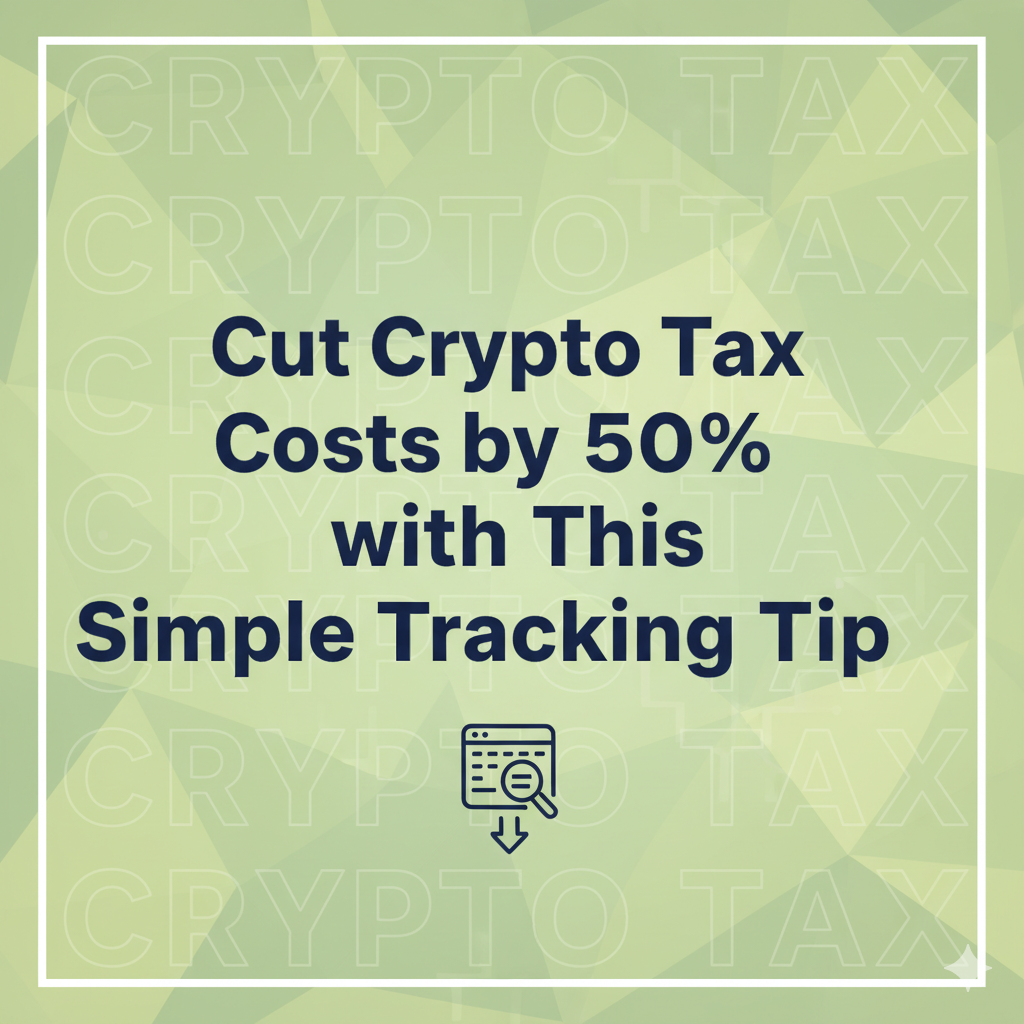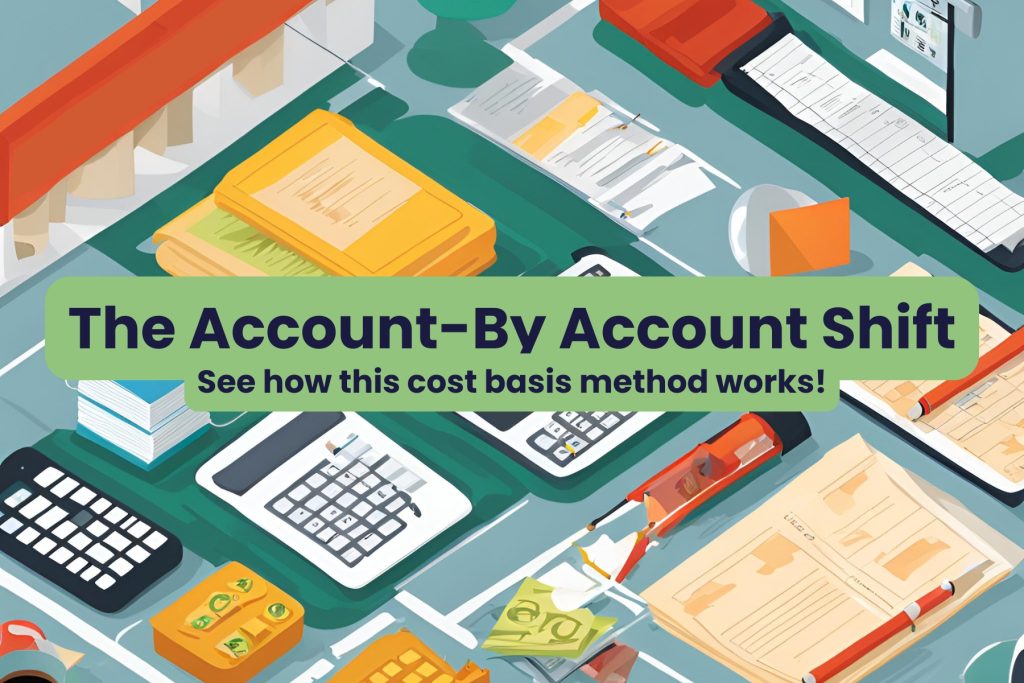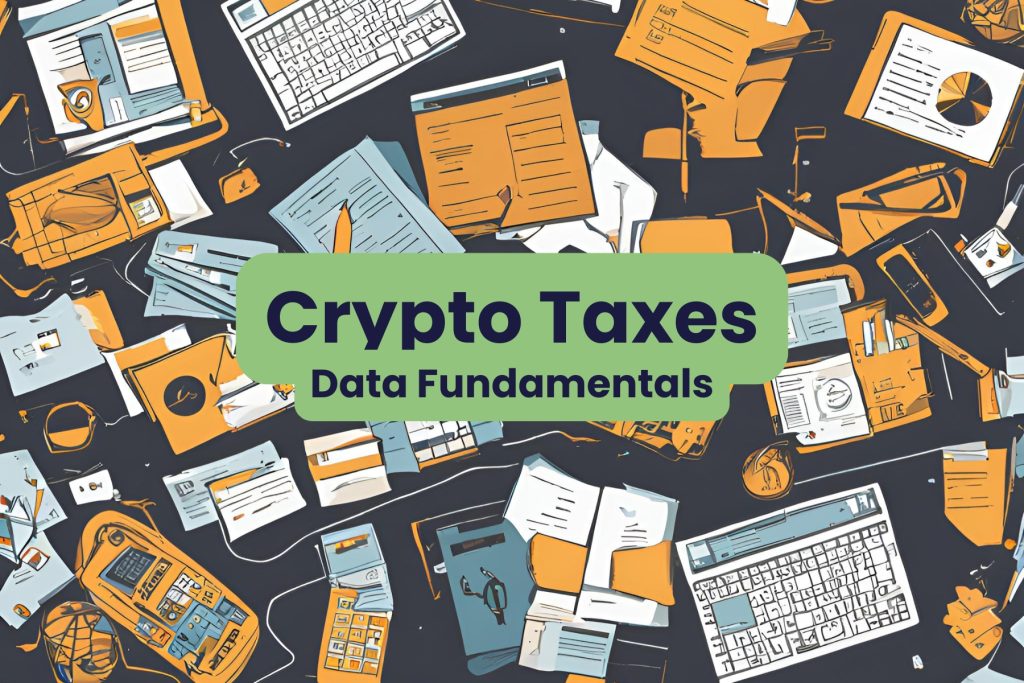Crypto & Tax Frequently Asked Questions
Welcome to my Crypto Tax FAQ, your go-to resource for demystifying the world of cryptocurrency and taxes.
Whether you’re a seasoned crypto enthusiast or just beginning your journey into the digital asset space, navigating the complexities of crypto taxation can be a daunting task.
My comprehensive FAQ section is designed to provide you with clear and concise answers to some of the most pressing questions surrounding crypto taxation. From understanding how crypto is taxed to deciphering cost basis methods and exploring the intricacies of specific identification, we’ve got you covered. Explore the world of crypto taxation with confidence, armed with the knowledge you need to ensure compliance and make informed financial decisions.
- How is crypto taxed?
Crypto taxation in the US follows IRS guidelines that classify cryptocurrency as property. This means that general tax principles applicable to property are applied, making it a math-intensive process.
- What triggers a taxable event?
Taxable events in the world of cryptocurrency typically involve the outflow of a crypto asset. These events include:
- Selling Crypto for Fiat: When you exchange your cryptocurrency for traditional fiat currency (like USD, EUR, or any other government-issued money), it is considered a taxable event.
- Trading Crypto for Crypto: Exchanging one cryptocurrency for another, such as trading Bitcoin for Ethereum, is also a taxable event.
- Spending Crypto: Using cryptocurrency for payment, whether it’s for goods, services, or any other transactions, is considered a taxable event. This includes everyday purchases made with crypto.
In essence, any activity that involves moving cryptocurrency out of your possession and into someone else’s, or converting it into a different form (like fiat or another cryptocurrency), can trigger tax obligations. It’s crucial to keep records of these transactions to accurately report your taxable events when it’s time to file your taxes.
- What makes crypto taxes complicated?
Crypto taxes can be exceptionally complex primarily due to the data-intensive nature of cryptocurrency transactions. While many tax professionals can readily handle theoretical scenarios and understand tax rules, the real challenge arises when dealing with the aggregation and processing of extensive sets of crypto data. Unlike traditional financial platforms, which typically provide investors with neat and straightforward 1099 forms summarizing their transactions, the world of cryptocurrency requires individuals to manually calculate their tax liabilities.
The complexity arises from two main factors:
- Data Complexity: Cryptocurrency transactions can be intricate, involving multiple parties, wallets, addresses, and intricate tracking. This complexity often makes it challenging to accurately compile and organize all the necessary data for tax reporting.
- High Transaction Volume: Many cryptocurrency users engage in a high volume of transactions, whether it’s trading, staking, or various other activities. Managing and documenting these numerous transactions can quickly become overwhelming and time-consuming.
The absence of standardized tax reporting mechanisms and the need to calculate gains, losses, and tax obligations manually can make crypto taxes a daunting task, even for experienced individuals. As a result, efficient record-keeping and the use of specialized crypto tax software or services become essential for navigating the intricate world of cryptocurrency taxation.
- What is the difference between income and capital gains?
Income and capital gains are distinct tax categories:
Ordinary Income encompasses income earned through regular activities like wages, salaries, and commissions. It also includes interest income from bank deposits.
Capital Gains tax, on the other hand, applies when you sell a capital asset, such as stocks, bonds, real estate, or other investments, for more than their purchase price.
In the realm of cryptocurrency, activities often straddle both categories. For instance, mining, staking, and airdrops generate ordinary income because they involve earning cryptocurrency through various activities. Conversely, spending, selling, or trading your cryptocurrency triggers capital gains or losses, as they involve disposing of an asset.
To simplify, a useful rule of thumb is that income considerations pertain to inflows, while capital gain considerations apply to outflows. In other words, when you receive cryptocurrency, it’s generally treated as income, and when you spend, sell, or trade it, it typically incurs capital gains or losses.
- What is a cost basis method?
A cost basis method is a systematic approach used to determine which specific lot of an asset has been sold, especially when you have purchased the same asset multiple times at different prices. This method is essential for calculating capital gains or losses accurately, as it helps identify the precise asset unit that was involved in a particular transaction.
In the world of cryptocurrency, there are three main cost basis methods:
- FIFO (First-In-First-Out): FIFO operates on the principle that the first cryptocurrency units you acquired are the first to be considered when you sell or trade. In other words, the oldest units in your holdings are deemed to be the ones sold first.
- LIFO (Last-In-First-Out): LIFO, on the other hand, assumes that the most recently acquired cryptocurrency units are the ones sold or traded first. It prioritizes the newest units in your holdings.
- HIFO (Highest-In-First-Out): HIFO focuses on the cost basis of your cryptocurrency units. It selects the units with the highest purchase price to be the ones sold or traded first.
It’s important to note that most cost basis methods used in the crypto space are universal. This means that they don’t take into account the movement of assets between wallets or addresses. While this may not perfectly reflect the actual movement of your assets, it’s generally acceptable for tax purposes.
Creating a cost basis method for each wallet, referred to as “by depot,” can be overly time-consuming and often doesn’t justify the effort in terms of tax savings. It’s important to understand that a cost basis method is essentially an accounting method, and while it aims for accuracy, it may not always perfectly align with the exact movements of your cryptocurrency assets.
- Which cost basis method should I use?
The most conservative choice for your cost basis method is FIFO (First-In-First-Out). According to Q41 of the IRS’ Virtual Currency FAQ, if you don’t specifically identify units of virtual currency, they are considered sold, exchanged, or disposed of in chronological order, starting with the earliest units you acquired. In simpler terms, it follows a “first in, first out” (FIFO) basis.
While FIFO is the safest option, you can also opt for LIFO or HIFO, but be aware that these methods come with higher audit risks and may invite closer scrutiny from the IRS if you ever face an audit.
- What is specific identification?
Specific identification, as defined in Q40 of the IRS’ Virtual Currency FAQ, allows you to pinpoint a specific unit of virtual currency using unique digital identifiers like private keys, public keys, and addresses. Alternatively, you can provide transaction records for all units of a specific virtual currency held in a single account, wallet, or address. To meet IRS requirements, this information should include:
- The date and time of each unit’s acquisition.
- The cost basis and fair market value of each unit at the time of acquisition.
- The date and time of each unit’s sale, exchange, or disposal.
- The fair market value of each unit when it was sold, exchanged, or disposed of, and the amount of money or value of property received for each unit.
- Interestingly, most taxable crypto transactions can easily satisfy these four elements with some programming know-how.
Interestingly, most taxable crypto transactions can easily satisfy these four elements with some programming know-how.
- When can I use specific identification?
There are two frequently encountered scenarios where specific identification becomes valuable:
- Unique Asset Storage: In the first scenario, you may have acquired an asset in a distinctive manner and then moved it into storage. Specific identification allows you to rename this asset from its usual symbol to something unique, like transforming “BTC” into “BTC-Ledger.” This approach proves useful as it segregates the data from the standard BTC tax records, preserving the uninterrupted holding dates essential for long-term gains.
- Isolated Activity within an Asset: The second common scenario arises when you have a substantial volume of activity associated with one asset throughout your data, and then there’s a self-contained loop. For instance, you might have extensive ETH transactions. If you purchase 1 ETH on Kraken and subsequently sell it on Kraken without any ETH transfers in or out of Kraken during that period, you can employ specific identification to rename it as “ETH-Kraken” or any other unique identifier. This ensures that these particular tax lots remain distinct from the regular ETH transactions in your records.
- What exchanges are good to use data-wise?
Coinbase and Kraken are known for providing reliable data for tax purposes. Binance.US is also suitable, with the exception of purchases made using the ‘Buy Crypto’ button, which are not shown in any data besides the email confirmations.
- What exchanges are bad to use data-wise?
KuCoin is generally considered the worst exchange for data accuracy, and it’s advisable to avoid it whenever possible. While many exchanges may have occasional data quirks, they are typically manageable issues. However, KuCoin stands out as an exchange that frequently fails to provide complete and accurate data, making it a less-than-ideal choice for cryptocurrency transactions and record-keeping.
- What can I do to make my crypto taxes easier?
Maintain a log of your DeFi transactions. Whenever you complete a transaction, create a list that includes the hash with relevant notes. This simple practice will significantly simplify your crypto reconciliation at the end of the year, sparing you the need to guess or recall transactions from months ago.
- What are quarterly estimates?
Quarterly estimates, also known as estimated tax payments, are periodic tax payments that individuals and businesses are required to make four times a year if they anticipate owing $1,000 or more in taxes when they file their annual tax return. While many individuals who are W-2 employees have their income taxes withheld by their employers, those with additional income sources or specific business structures, such as sole proprietors, partnerships, corporations, and S corporation shareholders, may need to manage their tax liabilities through quarterly estimates.
Here’s a breakdown of key points related to quarterly estimates:
- Who Needs to Pay: W-2 employees typically have their income taxes withheld from their paychecks by their employers, covering their tax obligations. However, individuals with side gigs or self-employment income often don’t have taxes withheld and may need to make quarterly payments. Additionally, businesses structured as partnerships, corporations, or S corporations must also make estimated payments if they anticipate owing taxes.
- Due Dates: Estimated tax payments are due on specific dates throughout the year to ensure that taxes are paid as income is earned. The due dates are as follows:
- January 1 to March 31: Payment due by April 15
- April 1 to May 31: Payment due by June 15
- June 1 to August 31: Payment due by September 15
- September 1 to December 31: Payment due by January 15 of the following year
- Avoiding Penalties: Failing to pay enough in quarterly estimates can result in interest and penalties. However, there is a safe harbor rule that allows you to avoid the Underpayment of Estimated Tax by Individuals Penalty. You can avoid this penalty if:
- Your filed tax return shows that you owe less than $1,000 in taxes, or
- You’ve paid at least 90% of the tax shown on your return for the current taxable year or 100% of the tax shown on your return for the prior year, whichever amount is less. It’s important to note that high-income earners may have a different threshold, potentially 110% of the prior year’s tax liability, depending on their income and filing status.
- When are taxes due?
Tax deadlines can vary depending on your tax entity, but here are some general guidelines for tax due dates in the United States:
- Individuals, Trusts, and C Corporations: For most individuals and entities classified as C corporations, taxes are typically due on April 15th of each year. However, if April 15th falls on a weekend or a holiday, the deadline may be extended to the next business day.
- S Corporations and Partnerships: S corporations and partnerships have a different tax due date. Generally, their taxes are due on March 15th of each year. Again, if this date falls on a weekend or a holiday, the deadline is extended to the next business day.
It’s crucial to understand that these dates represent the deadline for filing your tax returns and paying any taxes owed. Regardless of whether you file for an extension or not, the taxes you owe must be paid by these due dates to avoid accruing interest and penalties. Extensions provide additional time to complete your tax return but do not grant an extension for the payment of taxes owed. Therefore, estimating your tax liability and making payments on time is essential to avoid potential financial consequences.
- What does an extension do?
A tax extension is a valuable tool that provides individuals and businesses with additional time to prepare and file their tax returns. Typically, a tax extension grants an extension of approximately six months beyond the original tax filing deadline. Here’s what you need to know about tax extensions:
- Extra Time for Filing: By requesting a tax extension, you gain extra time to organize your financial documents, gather necessary information, and complete your tax return accurately. This extension is particularly beneficial for those who require more time to ensure their taxes are filed correctly.
- Avoiding Failure-to-File Penalties: One of the primary advantages of filing a tax extension is that it helps you avoid the failure-to-file penalty. This penalty is imposed when individuals or businesses miss the original tax filing deadline. Filing an extension by the initial due date of your taxes helps you sidestep this costly penalty.
- Extension Due Dates: The due dates for tax extensions vary depending on your tax entity:
- For S corporations and partnerships, the extension due date is typically September 15th.
- Trusts often have an extension due date of September 30th.
- Individuals have until October 15th to file their tax return if they’ve requested an extension.
- Managing Penalties and Interest: While a tax extension provides extra time to file, it does not exempt you from all penalties and interest charges. To minimize these additional costs, it’s advisable to estimate your tax liability and make any required tax payments by the original tax deadline. This ensures that you pay at least a portion of your taxes on time, reducing the amount subject to penalties and interest.
- Amending Your Return: If you cannot file your taxes accurately by the extended deadline, it’s recommended to file your taxes with a revised estimate of what you owe. Afterward, you can complete the tax return accurately and file an amended return. This approach helps you avoid the failure-to-file penalty and addresses any potential discrepancies or errors in your initial estimate.
- Which crypto tax software should I use?
Choose the one you like the most! I recommend auditing it with simple datasets to ensure accurate calculations. Remember, regardless of your choice, invest time in learning how to use it effectively for accurate results.




